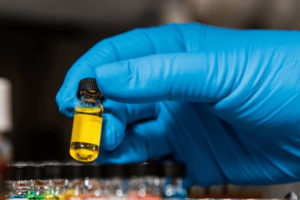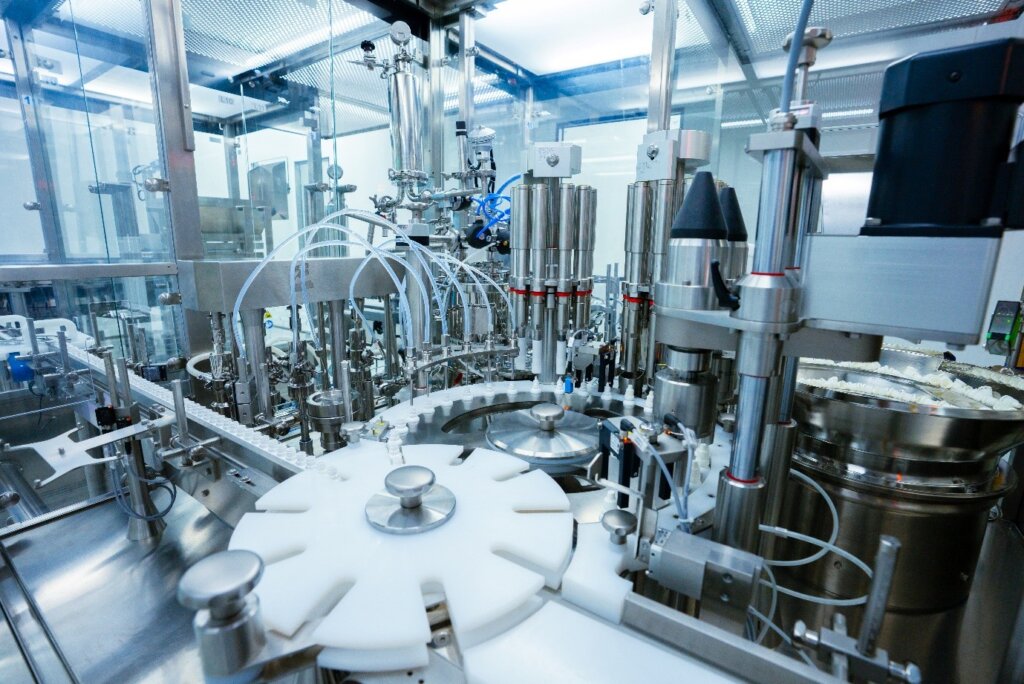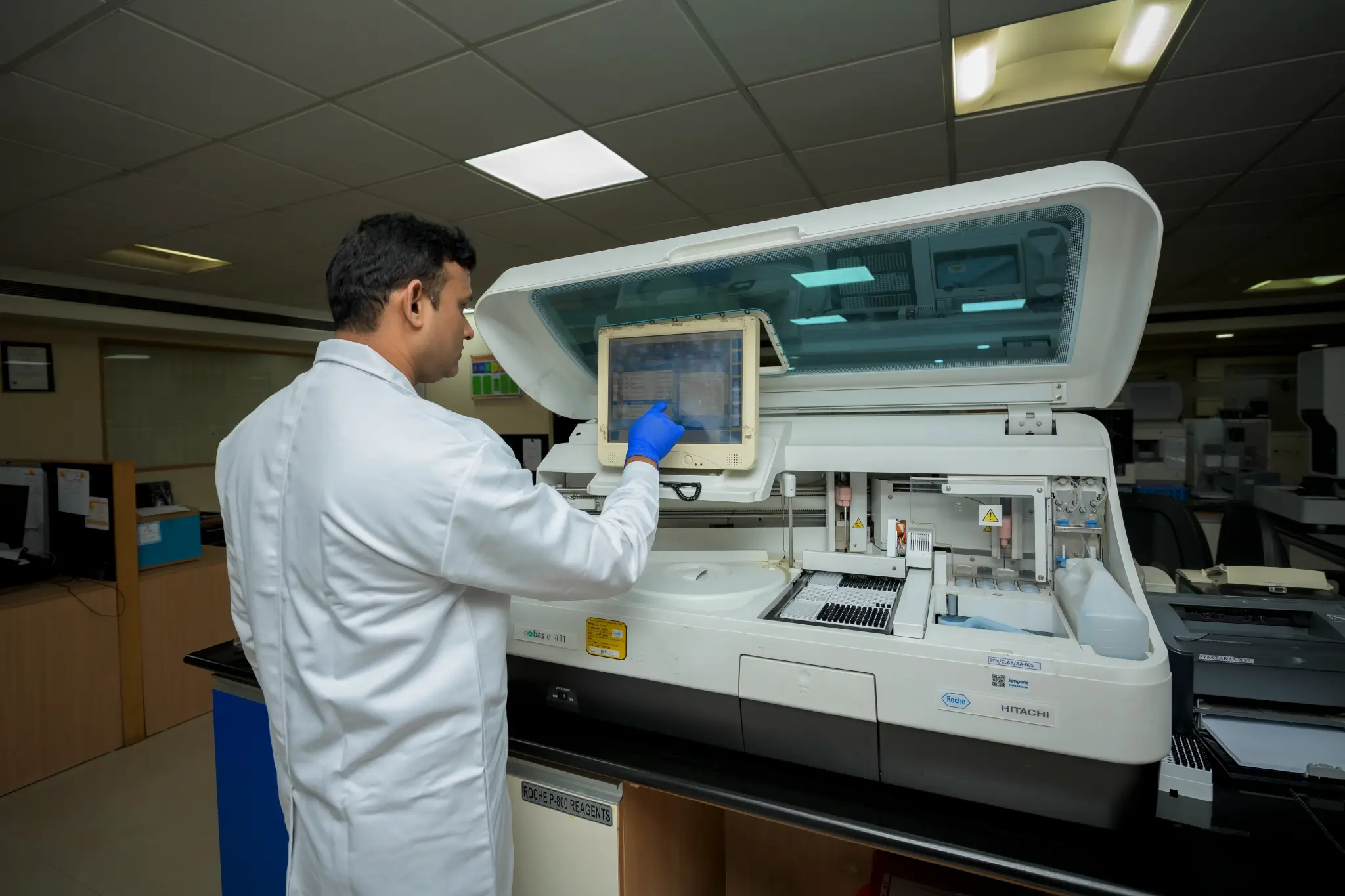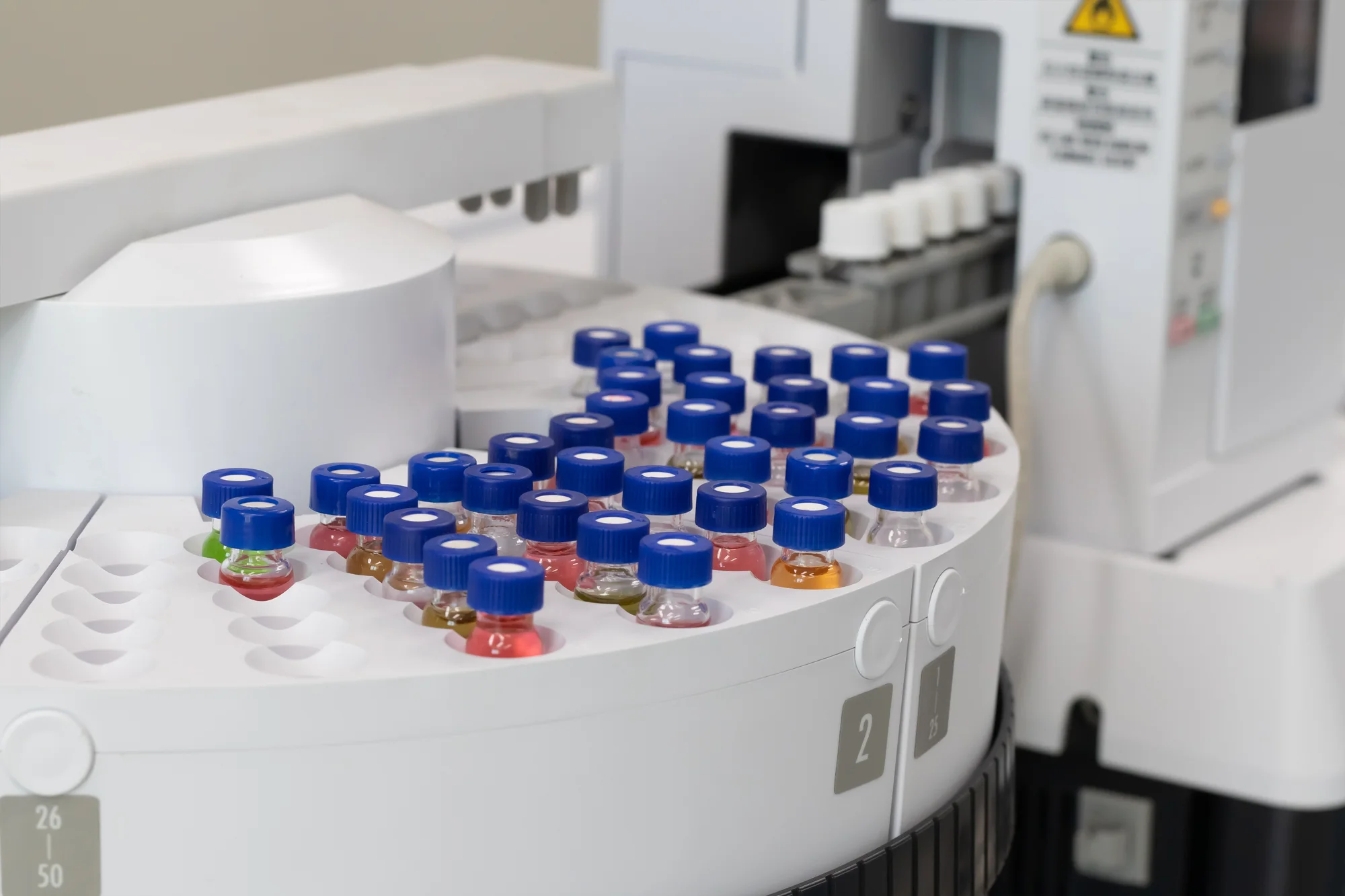Why CoG is mostly decided in early development
In discovery and preclinical stages, the process looks flexible, however a few choices quickly become sticky. Solvent systems, reaction temperatures, crystallization strategy, or cell culture platform, all of these shape yield, cycle time, utilities, and consumables. Scale up only amplifies what is already there. By committing to structured learning using design of experiments, teams can map the cause and effect early, then set boundaries that hold during scale changes. This keeps the pharmaceutical manufacturing process predictable and trims rework which quietly raises pharmaceutical cost of goods.
Figure 1. Material charging into stainless steel reactor, pharmaceutical manufacturing process.
Quality risk and efficiency, the twin lens
Quality by design encourages defining target product profile, identifying critical quality attributes, and linking them to process parameters. The same map also shows where cost sits. High agitation might protect quality, but if it increases foaming and antifoam demand, raw material cost and filtration time rise. A balanced view uses design of experiments to locate a design space that protects quality and helps efficiency. It is not magic, only disciplined experimentation, but the payoff is real.
Design of experiments in practice
A solid design of experiments plan begins with a clear question. In small-molecule synthesis, an early factorial design can evaluate temperature, reagent ratio, and solvent polarity to map yield and impurity growth. In biologics, a screening design can rank feed composition, pH, and temperature shifts for their effect on titer and glycan profiles. A response-surface design can then tighten the operating ranges. The aim is to learn quickly and sufficiently, not to test everything. Testing fatigue adds little value and is avoidable.
Route and raw material strategy
Route selection often fixes fifty percent of CoG. Shorter is not always cheaper. Availability and purity of starting materials, hazard class, and workup effort decide the true cost. A design for manufacturability mindset compares realistic supplier options, impurity fate, and waste treatment needs. Using design of experiments, chemists can quantify how reagent grade or water content affects impurity carryover. This avoids surprises during pharma tech transfer when a different vendor lot behaves differently.

Unit operations that move cost
Cost hides in filtration, drying, and cleaning, not only in fancy steps. In downstream unit operations, cycle time, hold times, and equipment turnaround are major drivers. For biologics, harvest clarification and Protein A loading limits can dominate operating cost. A small design of experiments on load density, wash volume, and elution slope can deliver higher resin productivity, which is a direct pharmaceutical cost reduction lever. For oral solid dose, a DoE on granulation moisture and impeller speed can cut drying time and improve tabletability, which reduces blend failures later.
Controls, analytics, and data discipline
Analytics are often treated as overhead, but smart analytics save money. With inline or at line measurements, batches do not wander. Design of experiments coupled with multivariate control charts helps set realistic alarms. When parameters are noisy, operators overcorrect and that actually increases waste. Calm, simple control bands defined by DoE results reduce deviations. This also simplifies pharma tech transfer documents because the ranges are evidence based and not guesswork.
Scaling without sticker shock
Many development programs struggle when moving from lab to pilot. Shear fields, oxygen transfer, heat removal, and mixing profiles change the process economics. A scale aware design of experiments incorporates dimensionless numbers or residence time distributions so that the model learns quantities that remain meaningful across scales. It sounds heavy, but even two carefully chosen scales with matched mixing numbers can prevent a string of failed engineering batches. That prevents emergency lots, which are always expensive.
People, materials, and time, the simple CoG triangle
People time, material use, and calendar time together define cost. DoE directly touches all three. Fewer experiments that teach more means less bench time. Controlled variability means fewer repeats, which cuts material use. A tighter process means less wait time between stages. In a typical program, a three-factor screening design followed by a focused optimization run can cut three to six weeks. Not everything is grand. Even a small saving here and there adds up.
Linking CoG to regulatory readiness
Regulators expect a process that is understood, not just executed. Quality by design documentation that traces CQAs to CPPs and shows design space through design of experiments reduces post approval changes later. That stability lowers lifetime cost. Reviewers also appreciate consistency in the pharmaceutical manufacturing process narrative, which prevents extra queries and delays. It is basic, but it matters.
When to use DoE and when not
Design of experiments is warranted when interactions are likely, or the operating window is tight. Full designs are unnecessary if a single factor dominates and resources are limited. Begin with a prior-knowledge assessment and select a design aligned with the question and the budget. Overdesign is a common pitfall. Another is inadequate randomization, which can confound time drift with factor effects. Runs should be randomized and, where appropriate, blocked. Post-hoc data cleaning cannot rescue a study compromised by poor randomization.
Tech transfer that protects cost
A stable process on paper still needs a clean handover. Early sharing of DoE models, raw data, and control logic makes technology transfer smoother. Receiving sites can recreate the learning path and trust the ranges. If a site must adapt equipment, the same design of experiments approach can be rerun quickly to confirm the design space. The transfer package should include simple operating envelopes, sampling plans, and what to do when things shift. This saves nervous batches and keeps the cost curve flat.
Biologics example, quick view
In a fed-batch mAb run at five-litre scale, a Plackett–Burman screen across seven factors identified three key drivers: feed composition, temperature shift, and dissolved oxygen setpoint. A central composite design then refined these three to maximise titer while holding the glycan profile steady. The optimum sat at a moderate feed rate rather than the highest one. Follow-up resin loading studies showed that running at a slightly lower load cut resin cost per gram because regeneration cycles lasted longer. The total CoG per gram fell, even though one input was a bit higher. It seems counterintuitive at first, but the arithmetic is straightforward.
Small molecule example, quick view
A nitration route shows a persistent dinitro impurity. A two-level factorial design checks acid strength, temperature ramp, and quench dilution. The interaction between ramp and dilution is the culprit. Slowing the ramp and increasing quench volume reduces the impurity to below limit, which shortens purification. The overall pharmaceutical cost of goods falls because solvent recovery improves, and cycle time reduces. Quiet, boring improvements like this win projects.
Design for manufacturability, keep it real
The plant is a real place, not a schematic. Design for manufacturability involves planning for actual footprints, utility capacity, cleaning realities, and operator workload. A brilliant lab step that relies on exotic materials or tight timing often bleeds money on the shop floor. A modest retool aligned with equipment families and standard spares usually wins on lifecycle cost. Design of experiments can demonstrate that the practical window remains robust. Clear documentation ensures the next team understands the rationale. That is all.
Key takeaways
Early design of experiments work, aligned with quality by design, lowers variability and trims waste. A realistic pharmaceutical manufacturing process that respects plant constraints keeps savings durable. Thoughtful pharma tech transfer maintains the same design space at the new site, so there is no surprise cost. In short, science guides the product, and smart design guides the cost.













